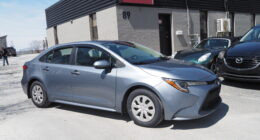Can You Return a Financed Car to the Dealer?

With a massive 84% of Canadians owning cars, is no surprise that many of us are paying off auto loans. We love exploring our wide-open spaces, and we love our cars, but we don’t always find it easy to keep pace with the costs. Consequently, we sometimes wonder how return a financed car to the dealer, even though they are necessary for people to do their jobs, or simply commute in greater comfort.
However, situations can change rapidly in today’s fast-moving economy, and what was affordable a few years ago may now be a budget-breaker. Lost jobs, illnesses, moving home unexpectedly, and other unforeseen events may slash incomes and earning capacities almost overnight, in parallel to the need for immediate cash. The obvious solution is to cash in on a major asset, like a vehicle, even if it is still financed.
Returning a Financed Car can be Tricky
In Canada, there’s no cooling-off period for vehicles. This means that you can’t simply change your mind and within a certain period, after closing a deal. Once those loan documents are signed, the lender (usually a dealership, sometimes a credit union or bank) becomes the lienholder, which means that you can’t transfer ownership of your car until the loan is paid off, one way or another.
Six Ways to Back Out of Financed Vehicle Ownership
So what are your options, other than opting to return a financed car to the dealer? There are at least six legal ways for Canadians to back away from a financed vehicle:
- Voluntary repossession is a variant on the dreaded repo process. Here, you voluntarily offer the car back to the dealership when you can’t keep up with the payments but want to avoid bankruptcy. However, this still counts as a default on your credit record. Worse still, the auction price might not cover your entire outstanding balance, which must still be paid;
- Rescheduling payments by persuading your lender to skip a few instalments and add them onto the end of your loan term. Most dealerships, credit unions, and banks are usually eager to keep their borrowers happy. This is because tough times can turn into bonanzas, and buyers have long memories;
- Rolling over your loan is a good idea if you want to trade in your current car and upgrade to a bigger, better, or newer model. A dealership may be able to add your current outstanding balance to the new loan taken out on your next ride. Consequently, you pay a little more each month to cover the difference, and possibly over a longer term as well;
- Refinancing your loan may be a feasible option when you can no longer afford the monthly payments, but have been paying them off promptly. Usually available only for loans that are at least a year old and for vehicles with relatively low mileage on the clock, this option requires finding a lender offering better terms than your original deal.
Best Ways to Return a Financed Car
If you have the money, then a lump-sum payment is your best option for getting out of a auto financing as quickly as possible. However, this may deplete your savings.
Selling your car is the only option that doesn’t leave you in debt, often even more deeply. Although private sales are difficult for financed cars, some dealers specialise in buying second-hand vehicles that are still under lien. They pay off your loan balance (or at least a good chunk of it) and ease your financial burden.
Takeaway
Although it’s rare for sellers to accept the return a financed car to the dealer, there are many other options available in Canada. They range from refinancing to sale. With expert advice from a qualified consultant, you can be confident of making the best choice for your personal situation. This is because dealerships are always eager to keep their customers happy.
Looking For Quick & Easy Financing?
We know how to find the best vehicle for your situation, and have you leave the lot with a smile on your face.
Apply now!


